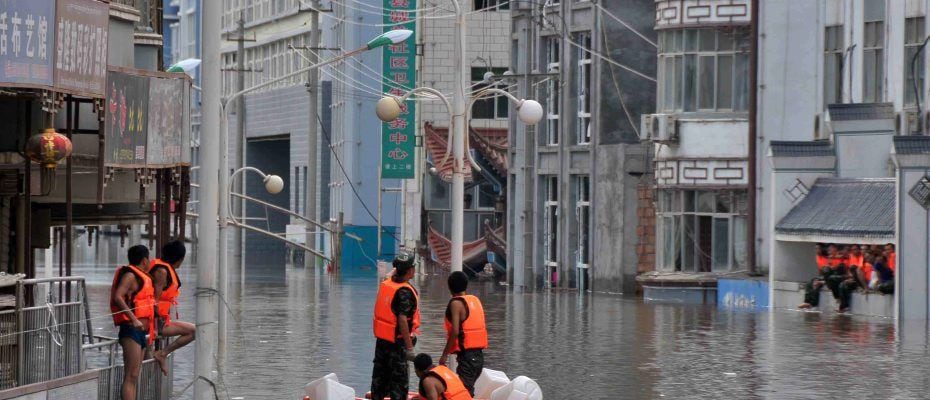Nearly one in two Chinese cities is threatened by land subsidence: this is what a study published Thursday April 18 in the journal reveals Science. A team of researchers from several Chinese universities measured, using data from European Sentinel-1 satellites, the deformation of the land across the country, between 2015 and 2022. In total, of the 82 large cities studied, 40% are experiencing subsidence. moderate to severe.
“Among the urban lands examined, 45% are sinking at a rate greater than 3 millimeters per year, and 16% at least 10 millimeters per year, affecting 29 and 7% of the urban population respectively,” indicate the authors of the study. In other words, 67 million Chinese live in areas which are rapidly sinking, specifies the website of the BBC.
Depletion of groundwater
Among the main reasons given, in addition to geological factors, this phenomenon is caused by the depletion of groundwater, used to supply local populations with water, and the weight of buildings. “The research team associated water extraction from more than 1,600 wells with increasing levels of land subsidence” in the same areas, it is written.
Beijing is one of the cities that is sinking the fastest: over the past century, it has fallen by 3 meters. Hong Kong media HK01 also recalls that the city of Tianjin, in the North, which has a population of 15 million inhabitants, is among the most affected. “In June last year, the ground cracked and subsided […] and 3,000 residents had to be evacuated.
L’mining also reinforces the phenomenon: the northern region of Pingdingshan, known for coal mining, is experiencing faster rates of subsidence, of the order of 109 millimeters per year, reports the British channel’s website. “Local governments are often forced to inject concrete into crumbling mines to reinforce the land,” adds HK01.
Flood risks
These urban areas are therefore more exposed to the risk of flooding, due to rising water levels. “By 2120, 22 to 26 percent of China’s coastal land will have a relative altitude below sea level,” the researchers say. In 2020, these figures stood at 6%. And this while China has already experienced significant flooding in recent years due to extreme climatic phenomena, such as heavy rains.
This Sunday, April 21, Chinese state media also announced that serious flooding is expected to hit certain southern regions due to heavy rainfall, reports AFP. Torrential rains have hit swaths of Guangdong province (around Guangzhou) since Thursday, swelling rivers in the Pearl River Delta – one of the most densely populated regions. Weather alerts were issued in this province and the national meteorological office warned of significant storms in coastal areas on Sunday evening and Monday.
The researchers, however, are not entirely doom and gloom. Based on cases from other Asian cities that have experienced similar problems of land subsidence, they believe that it is possible to slow down the phenomenon by fighting against the drying out of groundwater. Robert Nicholls, director of the Tyndall Center for Climate Change Research, explains to the BBC: “In the 20th century, Tokyo sank around its port area, up to five meters […] But in the 1970s, they began providing piped water from other areas and banned the use of well water, which essentially stopped the subsidence.” The phenomenon does not only affect China In the world, 6.3 million km2 of land are threatened with subsidence, in particular due to rising water levels, recalls the Hong Kong daily. HK01.
